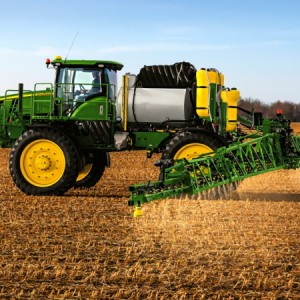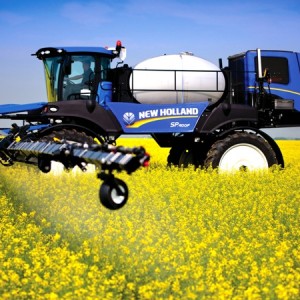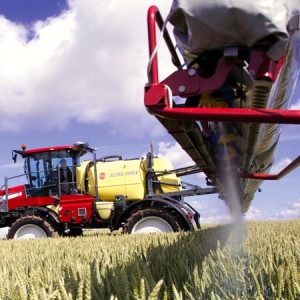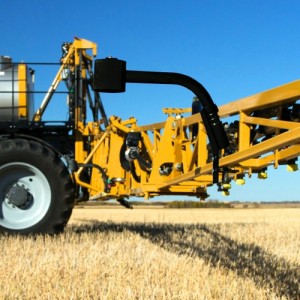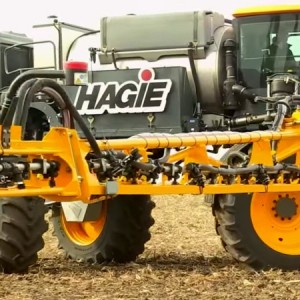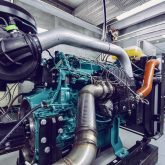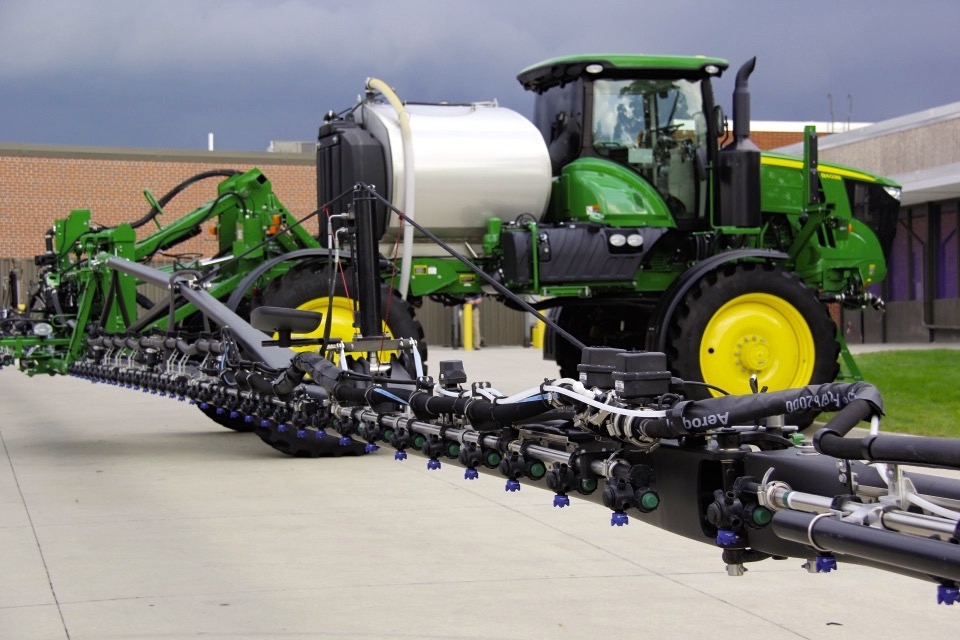It’s February and the itch to get into the shop and get things ready to put some seed in the ground is growing a little stronger every day. On many farms, the job that comes first, however, is spraying. Increasingly, this a job where it’s important to control the controllable and take full advantage when conditions are right. As the growing season beckons, we provide a glimpse below of the latest in self-propelled sprayers, including product launches and some interesting upgrades among the five manufacturers featured. As always, it will pay to do some serious homework before making your final choice.
John Deere R4045
More power, more capacity and higher application rates are just three of the upgrades that come with the R4045, John Deere’s latest addition to its 4-series sprayers, and a replacement for the 4940 model. Deere has taken what it believes to be the next step in sprayer design — from a 346 horsepower Final Tier 4 PowerTech engine to a 1,200-gallon solution tank and 90-, 100- or 120-foot booms and application rates of up to 230 gallons per minute. That’s an increase in performance and efficiency, with the goal of improving production. Of course, Deere has also put a lot of thought into operator comfort, adopting the same premium CommandView II Plus cab options as the R4030 and R4038. That means more space in the cab, more glass for improved visibility and a high-backed ComfortCommand seat and CommandArm for more comfortable, finger-tip control.
New Holland Guardian SP.400F
New Holland remains the “out-front” leader in self-propelled sprayers, especially now that it has completed its acquisition of Miller-St. Nazianz and its revolutionary front-boom design. Now the company is celebrating last June’s introduction of its new Guardian SP.400F model, boasting what it deems the “highest-capacity sprayer” in the industry. Also with a Tier 4B engine, the SP.400F offers excellent ground clearance, a smooth ride plus tank sizes ranging from 1,000 to 1,600 gallons and boom widths up to 120 feet. As with all Guardian sprayers, the SP.400F comes with the standard four-wheel hydrostatic drive, plus an option for a four-wheel crab steering configuration for easier handling on side hills and a reduction in wheel-track damage to crops. The unique hydraulic suspension system also provides a superior ride, while the cab design maximizes operator comfort.
www.agriculture.newholland.com
Hardi Alpha evo 4100
A well-known name in pull-type sprayers, Hardi has made the leap into self-propelled technology with the introduction of its new Alpha evo 4100, launched last August. The SP market has high expectations in performance, reliability and comfort, and Hardi’s first entry is a nimble sprayer design, yet one that’s engineered for the rigours of spraying season. The Alpha evo strikes a good front/rear balance and boom widths of 90 to 118 feet, while its lighter weight offers an optimal weight:capacity ratio and great performance under a wide range of conditions. Its ground clearance can be set from 47 to 59 inches, which translates into more adaptability, and its EcoDrive system and a new TDC 6.1 Tier 4i 245 horsepower engine offer more power flexibility and better fuel consumption with a quieter ride.
Norac Hybrid Mode spray height control
It may not be a self-propelled unit, but the Norac Hybrid Mode spray height control system just received a patent for use in the U.S. and Europe, and it’s promoted as a controller that will improve sprayer efficiency. The Hybrid Mode is Norac’s latest in-crop spraying feature, and is available on the company’s UC5 and UC4.5 spray height control systems to provide automatic control of a sprayer’s operation. That means operators no longer have to take manual control of the boom while spraying lodged, thin or uneven crops. The system can simultaneously track both crop canopy and the soil surface, then calculate the virtual “top of the crop,” providing more accurate control. It also reduces errors in adjusting boom height and it increases stability in the boom, thereby boosting the percentage of time the boom is at target spray height.
Hagie STS 2015
The changes that Hagie has made to its STS design from 2014 may not appear to be all that big a deal — at first. Yet the company promises more for the farmer, including operational comfort, system performance and overall productivity. Operator comfort has become a huge issue in the past few years, with equipment manufacturers investing more in research into how to help operators keep fresh and alert during those long days, and Hagie is following that trend. They’ve added more comfort, from the suspension on the sprayer to the height of the seat in the cab. They’ve even created a hands-free door opener for added safety. Hagie has also upgraded the fuel-fill option to reduce fill time. When loading product, there’s a check valve-style fill system, plus an enhanced fill capacity — capable of more than 300 gallons per minute — and booms up to 132 feet.
Read Also
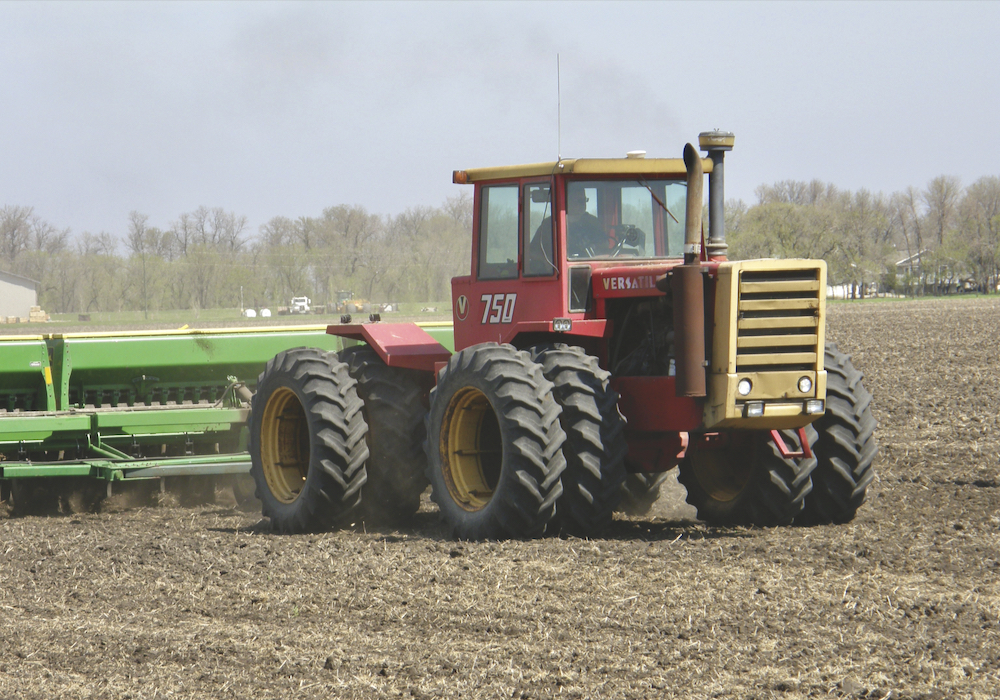
Summer Series: Old machines,new technology
One of my first jobs was working as a mechanic’s helper at a farm equipment dealership in the late 1970s….



